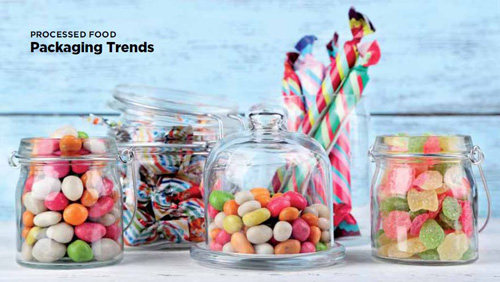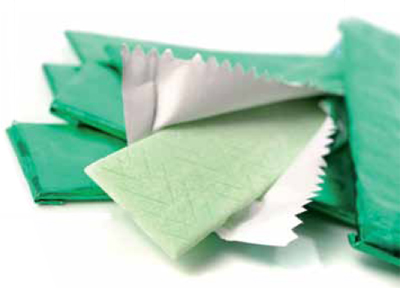Mr. Deepak Pahwa, Managing Director, Bry-Air | Progressive Grocer | May 2021
To manage the growth fuelled by consumer demand for packaged, ready to eat, hassle free food, manufacturers are quickly adopting modern environment control solutions that are used at various steps of food production – all the way up the value chain leading upto packaging and storage.
For any country’s economy to sustain, its gross domestic product (GDP) plays a pivotal role, which basically means the combined value of all goods and services produced within a country in a year. Various factors contribute to economic growth and Food is one of the most crucial subjects for any economy to sustain its population and its future needs. In India too, the sector has been identified as one of the key growth drivers. Other than producing its own large variety of food products on a regular basis, India is also amongst the biggest exporters of processed food across the world.
The Indian food and beverages industry is worth $400 billion, and the food processing sector accounts for about $130 billion. It makes up 10 percent of the agriculture GDP and 12 percent of the manufacturing GDP. The FnB industry puts a lot of attention on the quality, processing, and packaging of the end product by ensuring that the food item meets all the necessary standards and checks before being consumed. The focus on the overall quality has pushed the majority of the industry players to realise the importance of investing in advanced technologies.

To manage the growth fuelled by consumer demand for packaged, ready to eat, hassle-free food, these players are quickly adopting modern environment control solutions that are used at various steps of food production, all the way up the value chain leading upto packaging and storage.
Most processed food like candies, jellies, gums, snack food, powder food instant coffee, dried fruits and vegetables, spices, and other packaged foods have one thing in common. They are all hygroscopic and sensitive to high relative humidity. Moisture retention in food products not only alters their appearance but foods usually become soggy and less appetizing.
Consumers are not aware of the many process it takes a product to come out in the actual final appearance, and what kinds of measures the product undergoes during manufacturing.
The most common and prevalent issue food processing companies face is related to moisture. Inconsistent production, longer drying time, loss of key characteristics of the food product, etc. are some of the common problems faced by them thereby leading to frequent downtime of production units, rejections and losses. Uncontrolled humidity can play a spoilsport in maintaining the taste, flavour and shelf life of these convenience foods. Therefore, it is imperative to address the threat of moisture during product processing, packaging and storage.
In confectionery food items such as chocolates and sweets, moisture can affect the quality right from the point of storage to processing and storage of the finished chocolates. While processing if moisture takes place, then it leads to loss of gloss or lustre, sticky or grainy surface, sugar bloom and change in flavour.

Similarly, coffee powder picks up moisture from the surrounding air which causes lumping. This not only obstructs the free flow of the coffee powder during processing and packing but also reduces the aroma and shelf life of the coffee.
Micro-organism growth is also one of the main causes of potential food contamination. Moisture results in increased micro-organism growth. Microbial growth and dispersal can be controlled if the surroundings and the food processing machinery and equipment inside the food processing plant and food processing facility are kept dry. But keeping a plant dry is not easy as water is an essential part of the product and process of food processing.
Solutions for preventing moisture in products
Moisture retention not only impact the quality of the product, but deters the taste also. So, how manufacturers can control this obstacle, and what kind of solutions are required to overcome the problem? When moisture can lead to this kind of a profound effect on food, the solution lies in dehumidifying the air.
Proper dehumidification ensures optimum humidity control as required by the process and are dependable, efficient and versatile. Dehumidification allows smooth powder flow even during periods of high humidity.
During packaging, in many instances, low RH (Relative Humidity) has to be maintained effectively to prevent moisture. It requires the stringent condition of temperature and humidity in the surroundings of processing, packaging and storage areas with dry air. For long, desiccant dehumidifiers have been helping to ensure required humidity conditions are maintained in processing, coating, packaging areas of many food processing and confectionery.
Proper dehumidification ensures optimum humidity control as required by the process and are dependable, efficient and versatile. Dehumidification allows smooth powder flow even during periods of high humidity. By using the technology, it advances the products and able to maintain the taste with long shelf life.
This is why dry air is used prominently by leading food and beverages manufacturers to reduce the moisture content of the surrounding air. Desiccant-based dehumidifiers can lower the moisture content of the surrounding air by maintaining desired RH at a constant level regardless of the ambient conditions during the production, storage and packaging to help improve the quality and retain the freshness of the processed food longer.
While the F&B industry all over the world is using various dehumidification technologies, understanding and providing client-based solution is a pressing priority. Over the years, Indian players in the dehumidification products and solutions industry have earned a good name for themselves by coming up with cutting edge solutions that are “Made in India for the World”. These companies are successfully serving various national and international players to serve their varied dehumidification needs across industries be it pharmaceuticals, food, lithium battery production, automotives, defence, power to name a few.
The author is Managing Director, Bry-Air (Asia)




